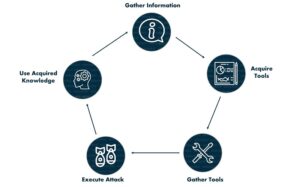When secure notes become interwoven with our augmented reality?

As augmented reality (AR) technology advances, it will significantly impact how we communicate and share information. One area where AR could have a particularly transformative effect is in the realm of secure notes. Secure notes, also known as self-destructing messages, have become increasingly popular in recent years to protect the privacy. These notes use advanced encryption to ensure that only the intended recipient accesses and reads the message and that the note is automatically deleted after a certain period.
With the rise of AR, it is possible to imagine a future in which secure notes become seamlessly interwoven with our everyday reality. For example, instead of sending a sensitive message via email or text, we could create a secure note that appears as a virtual object in the recipient’s AR display. The note could be programmed only to be visible to the intended recipient and could automatically self-destruct after being read or after a certain amount of time has passed. This integration of secure notes into AR could have numerous benefits. For one, sharing sensitive information securely and privately could make it easier and more intuitive. Rather than navigating multiple apps or platforms to send a secure message, users could create a note and place it in the recipient’s virtual environment. Additionally, using AR could add an extra layer of security to secure notes. By requiring the recipient to be in a specific physical location or to use a particular device to access the note, it would be even more difficult for unauthorised parties to intercept or access the information.
However, integrating secure notes into AR also raises important questions and concerns. For example, there are questions about how to ensure the security and privacy of the AR platform itself and how to prevent unauthorised access to or tampering with virtual notes. There are also concerns about the potential for surveillance or tracking and the implications of having sensitive information tied to specific physical locations. To address these concerns, developers and policymakers must work together to create robust security and privacy frameworks for AR-based secure notes. This could include advanced encryption and authentication measures and data collection, storage, and sharing guidelines. Educating users about the best practices for using secure notes in AR will also be essential. This could include guidance on creating and sharing notes securely and tips for protecting personal privacy and avoiding potential pitfalls.
Despite these challenges, the benefits of integrating secure notes into AR are significant. By making it easier and more intuitive to share sensitive information securely and privately, this technology could help promote greater trust, transparency, and collaboration in various contexts, from business and government to personal relationships and social interactions. Moreover, using AR could create a more immersive and engaging experience for users of secure notes. Allowing users to interact with virtual notes more tangibly and spatially could help make the secure communication process more natural and intuitive. As technology evolves and is widespread, we will likely see many applications and use cases for secure notes in this context. Integrating secure notes into our augmented reality can transform how we share and protect sensitive information in the digital age, from confidential business negotiations to personal communications and beyond.
Of course, realising this potential will require ongoing collaboration and innovation from developers, policymakers, and users alike. For more info about protected text check notesonline.com, integrating secure notes into our augmented reality could fundamentally change how we interact with and protect sensitive information. But if we can rise to the challenge and create a secure, private, and intuitive framework for AR-based secure notes, the benefits could be genuinely transformative for individuals, organisations, and society.









